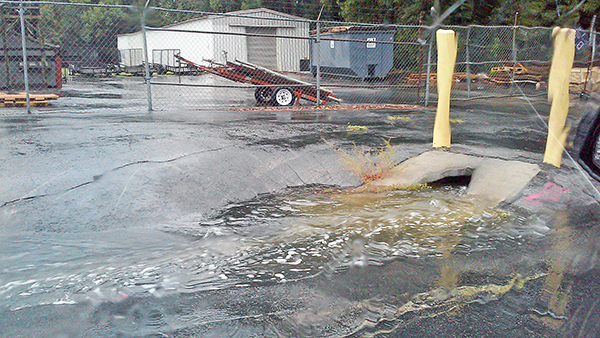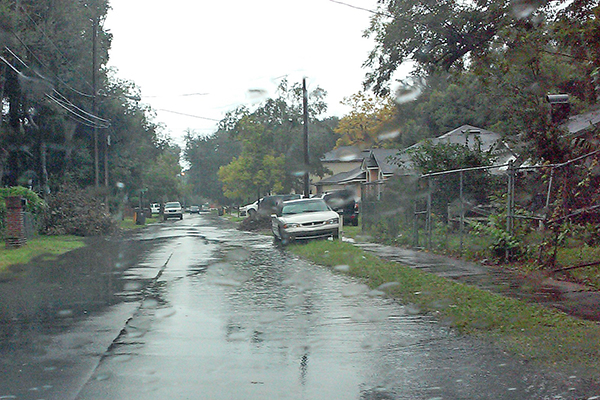For Much of Florida, Water Water Everywhere, Here and There a Drainage Problem
 Floridians are accustomed to summer rain, especially from April to October – the so-called “rainy season.” With the state’s extreme heat and humidity, the frequent, quick downpours are usually a welcomed respite. This year, however, some areas are wetter than usual (southwest), while others accustomed to moisture (the Panhandle and southeast) are in extreme drought.
Floridians are accustomed to summer rain, especially from April to October – the so-called “rainy season.” With the state’s extreme heat and humidity, the frequent, quick downpours are usually a welcomed respite. This year, however, some areas are wetter than usual (southwest), while others accustomed to moisture (the Panhandle and southeast) are in extreme drought.
Florida’s quirky weather patterns are an age-old phenomenon, often leaving forecasters scratching their heads.
Ever wonder where the stormwater goes after it drains away from your street? What keeps your neighborhood from flooding during storms? Why are ponds a certain size around business parks? How will you be able to water your lawn during a long drought?
Ayres Associates’ engineers help clients solve these issues regularly for communities throughout Florida, constantly honing their skills regarding best management practices for stormwater treatment design. And 2015 is shaping up to be a banner year to implement all the skills in our stormwater engineering toolbox, given the extremes.
Rain on the western side of Florida, in particular Tampa Bay, is not unusual. To many, the topic is boring.
This year the frequency of storms and the duration of the rain has been an issue, causing ground saturation, excessive runoff to ponds and ditches, and some local flooding. In engineering terms, the area reaches a high antecedent moisture content, or AMC, which is the soil moisture content. Therefore, there is no more room for rain to soak in during the recent barrage of new rain.
This challenge, however, is welcomed by our Florida engineers, who get to do what they do best: provide creative solutions to improve the communities in which we live, work, and play.
According to statistics from the Florida Department of Agriculture and Consumer Services, the Tampa Bay area received 55.4 inches of rain from January 1 to August 31, far exceeding the average rain during that period of approximately 32 inches. Tampa received 57.87 inches of rain during all of 2014.
In southeast Florida, however, residents are praying for rain. According to the National Drought Mitigation Center, the North Perry Airport in Broward County is more than 20 inches below average rainfall. Several communities in Miami-Dade County are between 6 and 17 inches below average. Many areas are recording one of their driest wet seasons on record, and government agencies are protecting water resources.
While northeast Florida has received mostly “normal” precipitation this year, no part of the state is ever off-limits from stormwater problems. Flooding is a year-round concern. Communities often have smaller issues that need addressing – before a storm hits.
 The photos accompanying this post show flooding that followed rain last week in the Pine Forest Neighborhood in the City of Jacksonville. We’re working with the City to design improvements that will help alleviate future flooding in the neighborhood. The improvements are scheduled to be constructed by January.
The photos accompanying this post show flooding that followed rain last week in the Pine Forest Neighborhood in the City of Jacksonville. We’re working with the City to design improvements that will help alleviate future flooding in the neighborhood. The improvements are scheduled to be constructed by January.
“Every year the rain hits us differently,” he says. “Tampa got the majority of it this year. The year before the Panhandle got hit hard. You never know where the rain is going to come from.”

Post a comment: